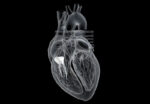The need for permanent pacemaker implantation (PPM) continues to be one of the main challenges in TAVR, especially with self-expanding valves, with a pacemaker implantation rate that varies between 17.5% and 30% in large randomized studies, vs. 4% to 6.5% with self-expanding valves. Therefore, in an attempt to prevent the need for PPM implantation, the...
TricValve: 12-Month Evolution
Tricuspid regurgitation has become increasingly common, and current pharmacological treatment options are limited. In turn, surgery, which is a complex alternative, carries considerable rates of complications and mortality. In response to this issue, various percutaneous systems are being developed, such as edge-to-edge treatment, percutaneous annuloplasty, and caval valve implantation (CAVI), among others. In the analysis...
Health Status Scores after Transcatheter Repair in Patients with Tricuspid Regurgitation: TRILUMINATE Analysis
Severe tricuspid regurgitation (TR) has been associated with higher mortality and significant limitations to patient quality of life, with considerable rates of hospitalization for cardiac failure (CF). Transcatheter edge-to-edge repair (TEER) with TriClip has been shown effective to reduce symptoms, with low risk of periprocedural complications. The aim of this study was to assess functional...
ACURATE Neo2: One-Year Hemodynamic and Clinical Benefit Results
Both Acurate Neo2 and its predecessor, Acurate Neo, have proven their safety and efficacy in the percutaneous treatment of severe aortic stenosis. The Acurate platform offers a lower gradient and a larger effective orifice area, as well as a low risk of periprocedural complications, according to previous registries. However, the first-generation Acurate device had some...
MYVAL, a TAVR Balloon-Expandable Valve with Promising Results
TAVR has been shown beneficial over time, and with the development of new generation of prosthetic valves and implantation techniques, outcomes have been improved, reducing the incidence of leaks y and the need for definite pacemaker. This study looked at the evolution of 100 patients with symptomatic aortic stenosis treated with Myval THV from Meril...
Predictors of Stroke at 30 Days and 6 Months After TAVR
While the rate of stroke has decreased since the early days of transcatheter aortic valve replacement (TAVR), it remains non-negligible, reaching up to 1%-3% at 30 days. As TAVR progressively expands to low-risk populations and younger patients, identifying risk factors for patient selection and management in stroke prevention becomes crucial. While researchers have identified predictors...
Can Ultrasound Treat Aortic Stenosis?
Severe calcified aortic stenosis is a common condition that can currently be effectively treated with SAVR or TAVR. However, some patients, given comorbidities or anatomical characteristics, are not good candidates for these therapeutic alternatives. The non-invasive ultrasound therapy (NIUT) has surged as viable alternative. It claims ultrasound might act on calcified valves, and mobilize tissue...
Is TAVR Beneficial in Cardiogenic Shock?
The presence of cardiogenic shock (CS) in a setting of aortic stenosis ranges from 1% to 4%. The prognosis for this scenario is ominous due to subendocardial ischemia, which presents as a decrease in ventricular preload and an increase in afterload. Aortic valvuloplasty has been used in this context, but, unfortunately, it has been associated...
OBSERVANT II: Post TAVR 30-Day and 6-Month Stroke Predictors
Despite stroke rate has declined since the early days of transcatheter aortic valve replacement (TAVR), it remains significant, reaching 1% to 3% 30 days after procedure. Since TAVR has seen a progressive expansion to the low risk and young populations, identifying risk factors in patient selection and management is crucial for us to prevent stroke. ...
MIL Training More MIL: Training Session at ICBA!
The scholarship program MIL Training More MIL continues at specialized centers in Buenos Aires. Yesterday, (Tuesday 26/09), selected female interventionists attended the Cardiovascular Institute of Buenos Aires (ICBA), where an intense session on structural heart disease took place. There were 2 live cases on bicuspid valve and complex access, transfemoral and trans-iliac respectively, both with...









